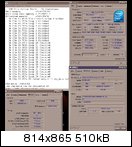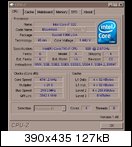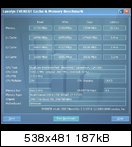Keeping VCore, VDimm, and VQPI in proper sync is the key to a stable overclock at voltages that will not shorten your processor's lifespan, well not by that much from what we can tell at this point. Intel's guidance continues to be not setting VCore past 1.55V, VDimm past 1.65V and VQPI (uncore to us) past 1.315V when overclocking. Kris will go over this in detail shortly, but in my experiences so far, getting these three voltages too far out of sync will quickly cause problems as one of our i965 processors can attest to now. Keeping them in sync and tweaking a few other settings will result in a finely tuned system that is capable of running settings higher than Intel's guidance although it is a warranty buster. At this point we like to keep VCore and VQPI within 0.0250~0.0375V of each other as you clock up, generally speaking, once you exceed about 1.3V on VCore it is time to start syncing these settings and others in the BIOS.
For us, VQPI is one of the most sensitive settings in the BIOS and one that will reward the user with higher bclk and mclk capabilities quicker than most other settings (except VCore/VDimm, although clock skews and amplitude are critical tuning settings also). When tweaking the BIOS, raising VQPI will generally allow memory speeds to either increase or memory timings to decrease without raising VDimm at certain gates. Depending on the memory utilized, you can even trade off higher VQPI for lower VDimm and improved timings, it's all a balancing act. In fact, our Corsair DDR3-1600 6GB kit is capable of running at DDR3-1066 on 5-5-5-15 timings with 1.58V VDimm and VQPI raised slightly to 1.2125V










 Das ist doch kein XE Prozessor
Das ist doch kein XE Prozessor

 )
)